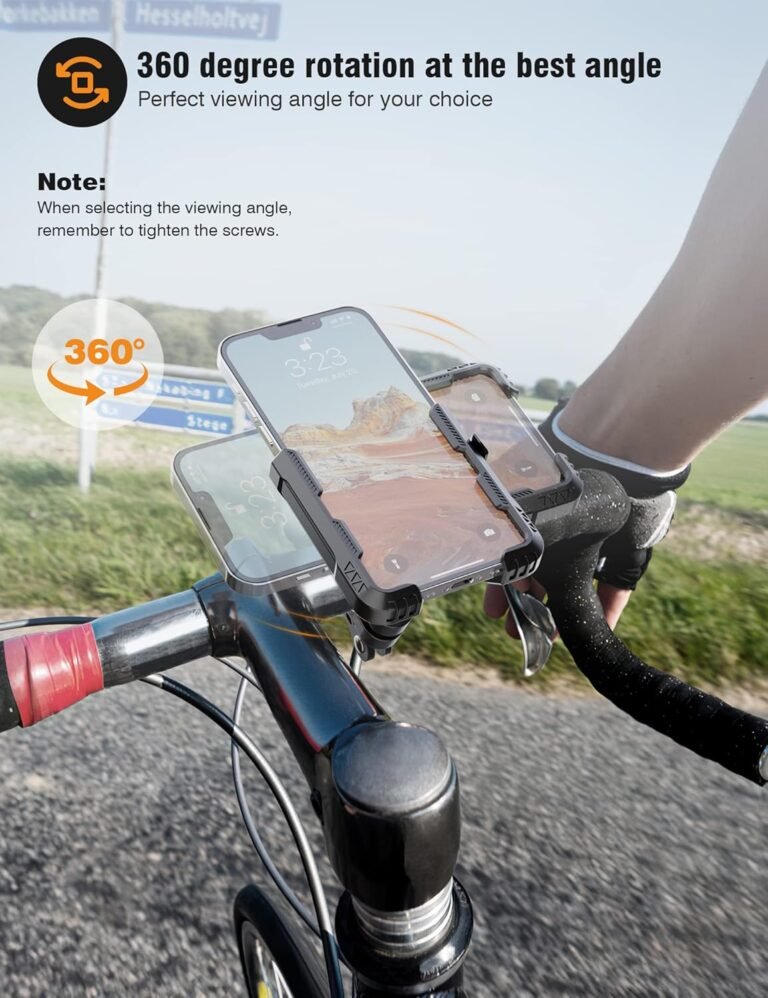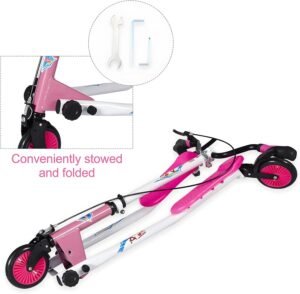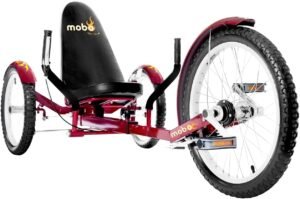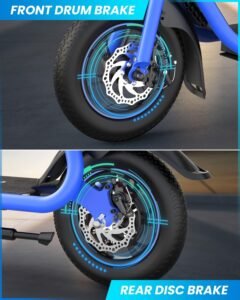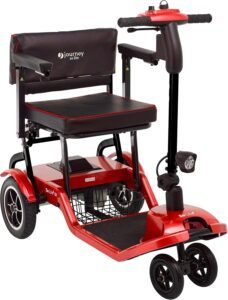
Are you ready to embark on a thrilling journey through the ever-evolving world of scooters? In this article, we will take a closer look at the latest trends in the scooter industry. From advanced technology and eco-friendly materials to sleek designs and innovative features, the scooter market is experiencing a revolution. Whether you are a passionate rider or simply interested in keeping up with the latest trends, join us as we delve into the fascinating world of scooters and discover what the future holds for this popular mode of transportation.

This image is property of images.pexels.com.
Check out our product reviews!
Electric Scooters
Electric scooters have seen significant advancements in battery technology, which has revolutionized the industry. With the introduction of more powerful and efficient batteries, electric scooters can now offer longer range and higher speeds than ever before. These advancements have made electric scooters a viable transportation option for daily commutes, as they can now travel longer distances without needing a recharge. The improved battery technology also allows for faster charging times, reducing the inconvenience of having to wait for hours to get back on the road.
Advancements in battery technology
One of the key factors driving the popularity of electric scooters is the continuous improvement in battery technology. Lithium-ion batteries, with their high energy density and longer lifespan, have become the standard for electric scooters. These batteries offer a more efficient power-to-weight ratio, allowing electric scooters to achieve higher speeds and longer ranges. Additionally, advancements in battery management systems have improved the safety and reliability of electric scooters, giving riders peace of mind while on the road.
Range and speed improvements
Thanks to advancements in battery technology, electric scooters now offer significantly increased range and speed. With larger capacity batteries, electric scooters can now travel up to 50 miles on a single charge, making them suitable for longer journeys. Moreover, the introduction of more powerful electric motors has enabled higher speeds, with some models reaching top speeds of 30 miles per hour. These improvements have not only made electric scooters a practical alternative to traditional transportation, but they have also added an element of thrill and excitement to the riding experience.
Integration of smart features
As technology continues to evolve, electric scooters are incorporating an array of smart features to enhance the rider’s experience. From Bluetooth connectivity and mobile apps to GPS tracking and anti-theft systems, these innovations provide riders with greater convenience, safety, and control over their electric scooters. With the help of smartphone apps, riders can easily monitor their battery levels, locate nearby charging stations, and even customize their scooter’s performance settings. The integration of smart features has transformed electric scooters into intelligent and connected devices, making them even more appealing to riders.
Foldable Scooters
Foldable scooters have gained popularity due to their compact design, which makes them incredibly convenient for storage and transportation. With urban spaces becoming more crowded, the ability to fold and carry a scooter has become a valuable feature for many commuters and city dwellers. Foldable scooters can easily fit into small apartments, offices, or the trunk of a car, allowing riders to seamlessly switch between riding and other modes of transportation. This level of portability has made foldable scooters a versatile and practical solution for those seeking a compact and efficient means of transportation.
Compact design for easy storage and transportation
Foldable scooters are designed to offer maximum convenience in terms of storage and transportation. These scooters can be easily folded and unfolded in a matter of seconds, allowing riders to quickly switch between riding and carrying mode. Once folded, they take up minimal space and can be easily stored under a desk, in a closet, or even carried on public transportation. The compact design of foldable scooters also ensures that they can be effortlessly maneuvered through congested areas, making them an excellent choice for urban commuting.
Increased durability of foldable mechanisms
One of the concerns with foldable scooters in the past was their durability. However, manufacturers have made significant improvements in the design and construction of foldable mechanisms, making them much more robust and reliable. High-quality materials, such as reinforced aluminum alloys, are now used to ensure the longevity and integrity of the folding mechanisms. This increased durability gives riders confidence that their foldable scooters will withstand daily wear and tear, providing long-term value and peace of mind.
Integration of lightweight materials
In addition to their foldable design, another key feature of foldable scooters is their use of lightweight materials. By incorporating materials such as carbon fiber, aluminum, and high-strength plastics, manufacturers have been able to significantly reduce the overall weight of foldable scooters without compromising on strength and durability. This not only makes them easier to carry when folded but also improves their overall maneuverability and handling while riding. Lightweight foldable scooters offer a smooth and agile ride, making them a popular choice for urban commuters who need to navigate busy streets and tight spaces.
Sharing Economy
The rise of scooter-sharing platforms has transformed the way people commute and travel within cities. Scooter-sharing services, which allow users to rent electric scooters for short trips, have become increasingly popular in urban areas. These platforms have not only provided an affordable and efficient transportation option for individuals, but they have also contributed to reducing traffic congestion, air pollution, and the carbon footprint of cities.
Rise of scooter-sharing platforms
Scooter-sharing platforms have experienced rapid growth in recent years, becoming a common sight in many cities around the world. These platforms offer a convenient and eco-friendly alternative to traditional transportation methods, allowing users to easily locate and rent electric scooters using a smartphone app. With just a few taps, users can unlock a scooter, ride it to their destination, and then simply park it at a designated drop-off spot. This flexibility and accessibility have made scooter-sharing platforms incredibly popular among commuters, tourists, and even locals looking for a fun and efficient way to get around.
Collaboration with ride-hailing services
To further expand their reach and accessibility, scooter-sharing platforms have started collaborating with ride-hailing services. Users can now find electric scooters listed alongside cars and bikes within popular ride-hailing apps. This integration provides users with a seamless and integrated transportation experience, allowing them to easily switch between different modes of transportation based on their needs. The collaboration between scooter-sharing platforms and ride-hailing services has made electric scooters even more accessible to a wider audience, further promoting sustainable and efficient urban mobility.
Regulatory challenges and developments
As scooter-sharing platforms gain popularity, cities are faced with the challenge of regulating the use of electric scooters to ensure safety and order on the streets. Some cities have imposed speed limits, helmet requirements, and designated scooter parking zones to prevent accidents and promote responsible riding. Additionally, cities are developing regulations regarding scooter-sharing permits, parking regulations, and fleet size restrictions to maintain a balance between the benefits of electric scooters and the potential challenges they may pose to pedestrians and other road users. Finding a sustainable and effective regulatory framework is a key focus for cities as they navigate the scooter-sharing phenomenon.

This image is property of images.pexels.com.
Check out our product reviews!
Safety Innovations
Ensuring the safety of riders is of utmost importance in the scooter industry. Manufacturers have been continuously developing safety innovations to enhance the overall riding experience and reduce the risk of accidents. Improvements in braking systems, enhanced visibility features, and the integration of advanced sensors have all played a significant role in making electric scooters safer and more reliable.
Improved braking systems
Braking systems are critical for rider safety, especially in densely populated urban areas. The development of advanced braking systems, such as regenerative brakes and electronic braking systems (EBS), has significantly improved the stopping power and responsiveness of electric scooters. Regenerative brakes utilize the scooter’s motor to slow down and recharge the battery while simultaneously providing smooth and controlled braking. EBS uses sensors to detect rider input and adjust braking force accordingly, enhancing safety and preventing skidding. These improved braking systems offer riders greater control and confidence, reducing the risk of accidents.
Enhanced visibility features
To improve rider safety, electric scooters are now equipped with enhanced visibility features. LED lights are commonly integrated into the front and rear of scooters, making them more visible to other road users during both nighttime and daytime riding. This helps reduce the likelihood of accidents caused by inadequate visibility. Additionally, some electric scooters feature turn signals and brake lights, further improving communication between scooters and other vehicles on the road. These visibility features play a crucial role in ensuring the safety of riders, pedestrians, and motorists.
Integration of advanced sensors for accident prevention
The integration of advanced sensors in electric scooters has significantly contributed to accident prevention. Proximity sensors and collision detection systems are now being incorporated into scooters to warn riders of potential obstacles or hazards in their path. These sensors can detect objects or vehicles and alert the rider through visual or auditory signals, allowing them to take appropriate action to avoid a collision. Some electric scooters also feature stability control systems that use gyroscopic sensors to detect and correct any loss of balance, reducing the risk of accidents caused by rider error. These safety innovations make electric scooters more reliable and help riders stay safe on the road.
Design and Aesthetics
The design and aesthetics of electric scooters have undergone a significant transformation in recent years. Manufacturers are placing increasing emphasis on creating sleek, modern, and visually appealing scooters that reflect the individuality and preferences of riders. From customization options to incorporating LED lighting, design and aesthetics have become key differentiating factors in the scooter industry.
Customization options for personalization
Electric scooter manufacturers now offer a wide range of customization options, allowing riders to personalize their scooters to reflect their own style and preferences. From different color options to interchangeable accessories and decals, riders can now create a scooter that is truly unique to them. Customization options not only add a touch of personalization but also contribute to safety, as riders can choose high-visibility colors or reflective accents to increase their visibility on the road. This focus on customization provides riders with the opportunity to make their scooter an extension of their personality.
Sleek and modern designs
In addition to customization options, electric scooters are now designed with sleek and modern aesthetics in mind. Manufacturers are adopting minimalist designs with clean lines and smooth curves, giving electric scooters a contemporary and sophisticated look. High-quality materials, such as brushed aluminum and carbon fiber, are often used to enhance the overall appearance and create a premium feel. These sleek and modern designs not only make electric scooters visually appealing but also contribute to their desirability as a lifestyle product.
Incorporation of LED lighting for visual appeal
LED lighting has become a popular feature in electric scooters, not only for enhancing visibility but also for adding a touch of style. LED lights are often integrated into the scooter’s frame, wheels, and handlebars, creating a stunning visual effect while riding at night. These lights can be customized to change colors or patterns, allowing riders to express their individuality and personal style. In addition to their aesthetic appeal, LED lights also contribute to safety, making electric scooters more visible to other road users, especially in low-light conditions.
Urban Mobility Solutions
Electric scooters have become a valuable element of urban mobility solutions, providing an efficient and sustainable alternative to traditional transportation methods. With the integration of electric scooters into public transportation systems and the development of dedicated scooter lanes, cities are working towards alleviating traffic congestion and providing greener transportation options for their residents.
Scooter integration with public transportation
Electric scooters are now being integrated into public transportation systems to provide riders with a convenient and seamless multi-modal transportation experience. Some cities have introduced scooter docking stations near bus stops and subway stations, allowing commuters to easily transition from one mode of transportation to another. By integrating electric scooters into existing public transportation infrastructure, cities are encouraging the use of eco-friendly alternatives and reducing the reliance on private vehicles for commuting.
Development of dedicated scooter lanes
To accommodate the growing number of electric scooters on the road, cities are investing in the development of dedicated scooter lanes. These lanes are designed specifically for electric scooters, providing riders with a safe and efficient path to navigate through traffic. Dedicated scooter lanes help reduce the chances of accidents and improve the overall flow of traffic. By prioritizing the needs of electric scooter riders, cities are creating a more sustainable and inclusive transportation network.
Efforts to alleviate traffic congestion
The integration of electric scooters into urban mobility solutions aims to alleviate traffic congestion by offering a more efficient and sustainable transportation option. Electric scooters are particularly well-suited for short-distance trips within cities, reducing the reliance on cars for short commutes and errands. By encouraging the use of electric scooters, cities can reduce traffic congestion, improve air quality, and create a more livable urban environment. Efforts to alleviate traffic congestion through the promotion of electric scooters align with the goals of sustainable urban planning and transportation.

This image is property of images.pexels.com.
Sustainability Initiatives
In response to growing environmental concerns, the scooter industry has embraced sustainability initiatives aimed at reducing the environmental impact of manufacturing and using electric scooters. By adopting manufacturing processes with minimal environmental impact, using eco-friendly materials, and developing recyclable components, scooter manufacturers are contributing to a greener and more sustainable future.
Manufacturing processes with minimal environmental impact
Scooter manufacturers are increasingly adopting manufacturing processes that minimize their environmental impact. Energy-efficient production methods and the use of renewable energy sources help reduce carbon emissions during the manufacturing process. Additionally, manufacturers are implementing recycling and waste reduction programs to minimize the environmental footprint of their operations. By prioritizing sustainable manufacturing practices, scooter manufacturers are actively working towards a more environmentally friendly industry.
Use of eco-friendly materials
Another aspect of sustainability in the scooter industry is the use of eco-friendly materials. Manufacturers are exploring alternatives to traditional materials, such as using recycled plastics or bio-based composites, to reduce the reliance on non-renewable resources. Additionally, companies are focusing on minimizing the use of toxic or harmful substances in their scooters, making them safer for both the environment and riders. The use of eco-friendly materials not only reduces the environmental impact of scooter production but also contributes to the overall sustainability of the industry.
Development of recyclable components
Scooter manufacturers are prioritizing the development of recyclable components to promote a circular economy. By designing components that can be easily disassembled and recycled at the end of their lifecycle, manufacturers are reducing waste and minimizing the amount of materials that end up in landfills. This focus on recyclability ensures that scooters have a minimal impact on the environment throughout their entire lifespan. Additionally, some manufacturers are even offering take-back programs to encourage the responsible disposal and recycling of old or damaged scooters.
Market Analysis
The demand for scooters, both electric and traditional, has been steadily growing in recent years. With the rise of urbanization and the need for efficient and sustainable transportation, scooters have become an attractive alternative to traditional forms of transport. Regional market trends vary depending on factors such as infrastructure, consumer preferences, and government policies. Additionally, competition among scooter manufacturers continues to intensify as companies strive to capture the growing market share.
Growing demand for scooters
The demand for scooters, particularly electric scooters, has been experiencing significant growth in recent years. As cities become increasingly crowded and congested, individuals are seeking alternative transportation options that are efficient, cost-effective, and environmentally friendly. Electric scooters, with their ease of use, affordability, and zero-emission operation, have emerged as a popular choice among urban dwellers. The convenience, portability, and fun factor associated with scooters have contributed to their rising popularity and sustained demand.
Regional market trends
Regional market trends in the scooter industry vary based on factors such as infrastructure, consumer preferences, and government policies. In densely populated urban areas with efficient public transportation systems, the demand for scooters, particularly electric scooters, tends to be higher. Cities that prioritize sustainable transportation options and invest in the necessary infrastructure, such as dedicated scooter lanes and charging stations, tend to experience rapid scooter market growth. Additionally, factors such as cultural preferences and income levels play a role in shaping regional market trends, with some regions showing a higher affinity for scooters than others.
Competition among scooter manufacturers
As the demand for scooters continues to grow, the competition among scooter manufacturers has become increasingly fierce. Established companies and startups alike are vying for market share by launching innovative products, improving performance, and offering competitive pricing. Manufacturers are constantly striving to differentiate themselves through unique features, customization options, and branding. The competition has led to continuous advancements in technology, design, and overall quality of scooters, ultimately benefiting consumers by providing a wide range of options to choose from.
Innovative Charging Solutions
Charging is a critical aspect of owning an electric scooter, and manufacturers have focused on developing innovative solutions to address the challenges associated with charging infrastructure and efficiency. Rapid charging technologies, solar-powered charging stations, and efficient energy management systems are some of the innovations driving the evolution of scooter charging.
Rapid charging technologies
To address the issue of long charging times, scooter manufacturers have been investing in rapid charging technologies. These technologies allow scooters to charge at a faster rate, significantly reducing the time required for a full charge. Rapid charging systems can now provide enough power for several miles of riding in just a matter of minutes. This innovation improves the overall convenience of owning an electric scooter, as riders can spend less time waiting for their scooter to charge and more time on the road.
Integration of solar-powered charging stations
To further enhance the sustainability of electric scooters, manufacturers have begun integrating solar-powered charging stations into their charging infrastructure. These charging stations utilize solar panels to convert sunlight into electrical energy, which is then used to charge electric scooters. By harnessing the power of the sun, electric scooter owners can reduce their reliance on traditional grid electricity, minimizing their carbon footprint. Solar-powered charging stations also provide an alternative charging solution for riders who may not have access to a power outlet, further increasing the accessibility of electric scooters.
Efficient energy management systems
Energy management systems are becoming increasingly sophisticated, allowing for more efficient charging and usage of electric scooters. These systems optimize energy consumption by intelligently managing power distribution and usage. For example, some scooters feature regenerative braking, which converts kinetic energy into electrical energy and stores it in the battery, thus extending the scooter’s range. Additionally, energy management systems monitor and adjust power output based on the rider’s speed, terrain, and other factors, ensuring efficient usage of energy. These advancements in energy management systems contribute to the overall efficiency and sustainability of electric scooters.
Ergonomics and Comfort
Riding comfort is essential for the overall riding experience, and scooter manufacturers have placed an increased emphasis on ergonomics and comfort features. Adjustable handlebars and seats, shock-absorbing mechanisms, and ergonomic designs all contribute to a smoother and more enjoyable ride.
Adjustable handlebars and seats
Manufacturers have recognized that riders come in different shapes and sizes, and as such, have incorporated adjustable handlebars and seats into their scooter designs. This allows riders to customize the ergonomics of their scooter to suit their individual preferences and ensure a comfortable riding position. Adjustable handlebars and seats accommodate riders of various heights, promoting proper posture and reducing the risk of fatigue or discomfort during longer rides. This focus on adjustability enhances the overall comfort and usability of electric scooters.
Shock-absorbing features for a smoother ride
To mitigate the impact of bumps and uneven surfaces, electric scooters now incorporate shock-absorbing features. Some models feature front and rear suspension systems that effectively absorb shocks, providing a smoother and more comfortable ride. These shock-absorbing mechanisms not only increase rider comfort but also improve stability and control, especially when riding on rough terrain or uneven surfaces. By minimizing vibrations and jolts, scooters with shock-absorbing features offer a more enjoyable and less fatiguing riding experience.
Ergonomic designs for user comfort
In addition to handlebar and seat adjustability, scooter manufacturers have focused on ergonomic designs to enhance user comfort. Scooters now feature ergonomically shaped grips, ensuring a comfortable and secure hold while riding. The placement of controls, such as the throttle and brakes, is carefully designed to reduce strain and improve accessibility. Additionally, scooters now offer ample foot space and intuitive footrests, allowing riders to comfortably position their feet during longer rides. These ergonomic design elements contribute to a more natural and comfortable riding experience, minimizing rider fatigue and promoting longer trips.






